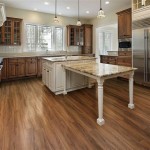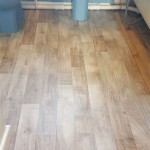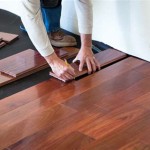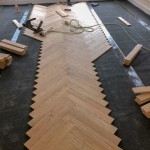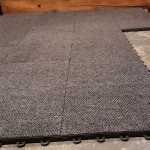Vinyl Floor Next To Hardwood
Vinyl flooring and hardwood flooring are two popular types of flooring that can be used in a variety of homes. Vinyl flooring is a type of synthetic flooring that is made from polyvinyl chloride (PVC). It is a durable and waterproof flooring option that is easy to clean and maintain. Hardwood flooring is a type of natural flooring that is made from wood. It is a beautiful and durable flooring option that can add value to your home. Combining vinyl flooring and hardwood flooring in a single home can be a difficult task because the materials require different installation methods and may not match seamlessly.
One of the main differences between vinyl flooring and hardwood flooring is their installation methods. Vinyl flooring can be installed over a variety of subfloors, including concrete, wood, and vinyl. It is installed using a glue-down method or a click-lock system. Hardwood flooring requires a flat, smooth subfloor that is free of moisture. It is installed using nails or a floating system. The different installation methods can make it difficult to transition between vinyl flooring and hardwood flooring in the same home. For example, if you want to install vinyl flooring in your kitchen and hardwood flooring in your living room, you will need to find a way to transition between these two flooring types seamlessly. There are a few different ways to do this, but one common method is to use a transition strip. A transition strip is a thin piece of metal or wood that is used to cover the seam between two different types of flooring.
Another important difference between vinyl flooring and hardwood flooring is their appearance. Vinyl flooring is available in a wide variety of colors and patterns, so you can find a style that matches your home's décor. Hardwood flooring is also available in a wide variety of colors and patterns, but it has a more natural look that emphasizes the grain of the wood. This difference in appearance can make it difficult to match vinyl flooring and hardwood flooring in the same home. For example, if you want to install vinyl flooring in your kitchen and hardwood flooring in your dining room, you might find it difficult to find a vinyl flooring style that matches the color and grain of your hardwood flooring. To create a seamless transition between vinyl flooring and hardwood flooring, you may need to choose a vinyl flooring style that is similar in color and grain to your hardwood flooring. You might also consider using a transition strip to hide the seam between the two flooring types.
Vinyl flooring and hardwood flooring can be a beautiful and durable addition to your home. However, combining these two flooring types in a single home can be a difficult task. The different installation methods and appearance of these flooring types can make it difficult to transition between them seamlessly. If you are considering combining vinyl flooring and hardwood flooring in your home, it is important to carefully consider the different factors involved and to do your research before making a decision. You may want to consult with a professional flooring installer to get their expert advice on how to best combine these two flooring types in your home.

How To Match Vinyl Laminate And Solid Hardwood Pro Flooring

Installing Luxury Vinyl Floors Over Engineered Hardwood Honey Built Home

Proof That It S Possible To Match Lvp Your Hardwood Floors

Can I Put Vinyl Plank Flooring Next To My Maple Hardwood

Dos And Don Ts For Installing Vinyl Plank Floors In The Bathroom Advice Homeowners

Hardwood Vs Luxury Vinyl Plank Flooring The Creative Kitchen Co

Proof That It S Possible To Match Lvp Your Hardwood Floors

Transition Between Vinyl Plank Flooring And Hardwood Floor Quick Easy

How To Install Vinyl Flooring Over Hardwood Floors Wood Floor Fitting

Pin Page


